Physical Address
304 North Cardinal St.
Dorchester Center, MA 02124
Child protection and safeguarding is about protecting individual children identified as suffering or likely to suffer significant harm as a result of child maltreatment. Child maltreatment includes all types of abuse and neglect of a child under the age of 18 by a parent, caregiver or another person in a custodial role, that results in harm, potential for harm or threat of harm to a child ( Box 71.1 ). All ophthalmologists must consider the safety and welfare of children whether they see them routinely or not. Ophthalmologists who work with children must have the knowledge and skills to recognize signs and symptoms of abuse and neglect and take prompt action.
Physical
Sexual abuse/exploitation
Emotional/psychological
Fabricated or induced illness
Human trafficking
Modern slavery
Female genital mutilation
Witnessing domestic violence and abuse
Failure to provide: physical, educational, medical/dental neglect
Failure to supervise: inadequate supervision, exposure to violent environments
Recent data from the United States report about 1 in every 7 children have experienced abuse and neglect. In 2019 in England and Wales there were 54,380 children who experienced child maltreatment. These figures are considered to underestimate the true prevalence, as many cases may not be reported.
The lifetime economic burden of child maltreatment rivals other high profile public health problems like type 2 diabetes and stroke.
The current estimated prevalence of physical abuse is 7.6%, extrapolated from crime surveys of adults who experienced abuse before the age of 16 years. Abusive head trauma occurs in 1.8% of cases of physical abuse, has an incidence of between 10 and 30/100,000 infants less than 2 years of age, which does not appear to have changed despite a number of preventive interventions. Vitreoretinal and non-vitreoretinal ocular injuries are frequently reported in abusive head injury and are common in infancy.
Risk factors for abuse include certain child and perpetrator characteristics; a number of individual, societal and community factors may predispose a child to maltreatment. Conversely, a supportive family and community may be protective against abuse ( Box 71.2 ).
Children less than 4 years
Special needs children that may increase caregiver burden
Individual risk factors
Parents: lack of understanding of child’s needs, development, poor parenting skills, parental history of child maltreatment, substance abuse, mental health issues, young age, single parent, low income, multiple dependent children, parental thoughts and emotions that support or justify maltreatment
Non-biological, temporary partners (mother’s male partner)
Family risk factors
Social isolation
Family stress, divorce, domestic violence
Community risk factors
Community violence
Concentrated neighborhood with high poverty, high unemployment rates, and poor social connections
Family factors
Supportive family environment for child’s needs, nurturing parenting, good social network, stable relationship, parental employment
Adequate housing
Access to health and social care
Community factors
Community supportive of parents
Supports abuse prevention
The signs and symptoms will depend on the type of abuse or neglect. It is the duty of an ophthalmologist to know when to suspect child maltreatment for any child that presents to an ophthalmology clinic and to be familiar with local guidance for referral to child protection teams. The majority of children seen by ophthalmologists where child maltreatment is suspected are as a result of requests for a consult from the pediatricians or the child protection team.
The following signs may alert a clinician to suspect child maltreatment and trigger a multi-agency and ophthalmology referral:
Bruising: pattern bruises ( Fig. 71.1 ), bruises away from bony prominences and where there is no adequate innocent explanation ( Fig. 71.2 ); bruises in non-independently mobile infants and periocular bruising in infants are very rare and suggestive of abuse.
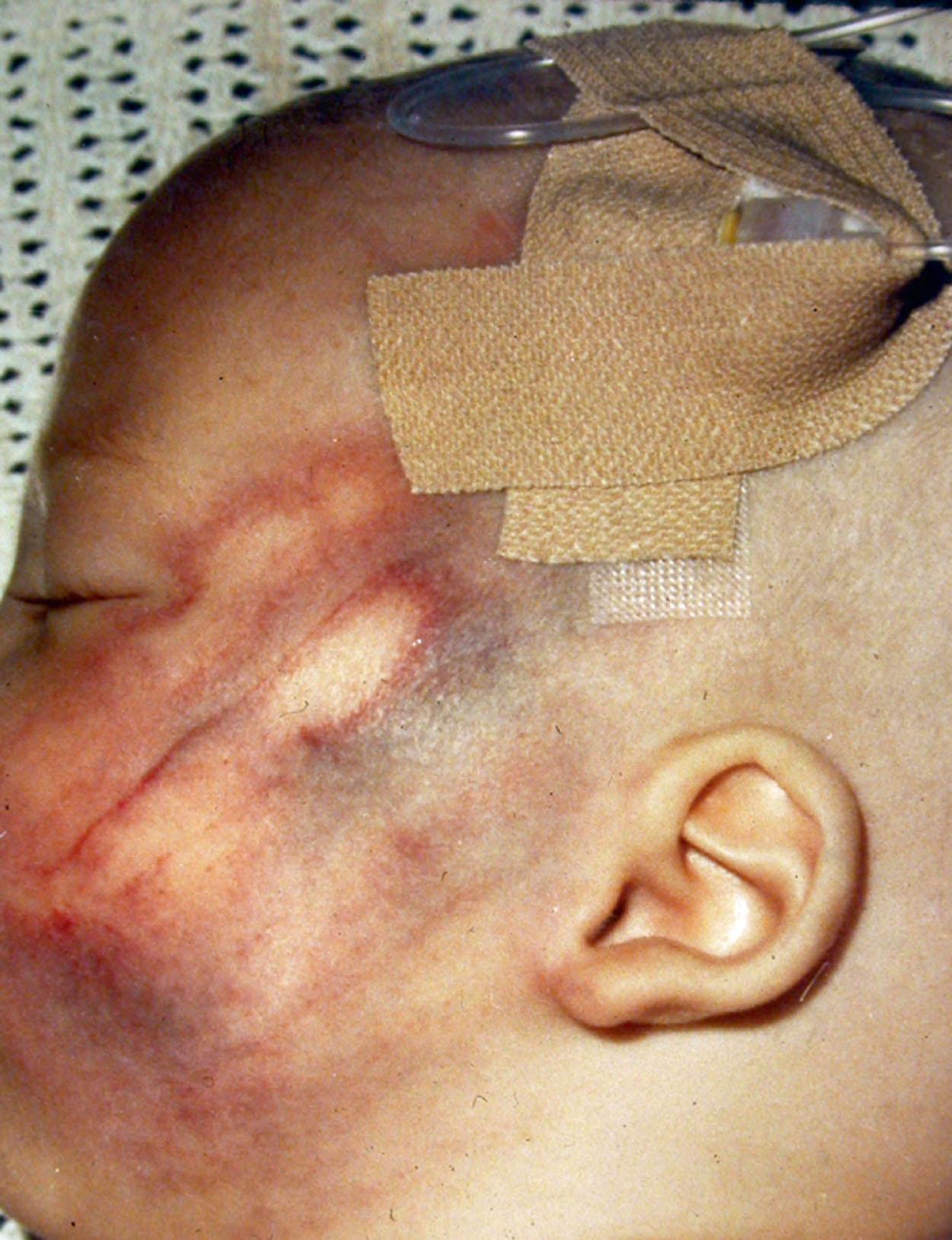
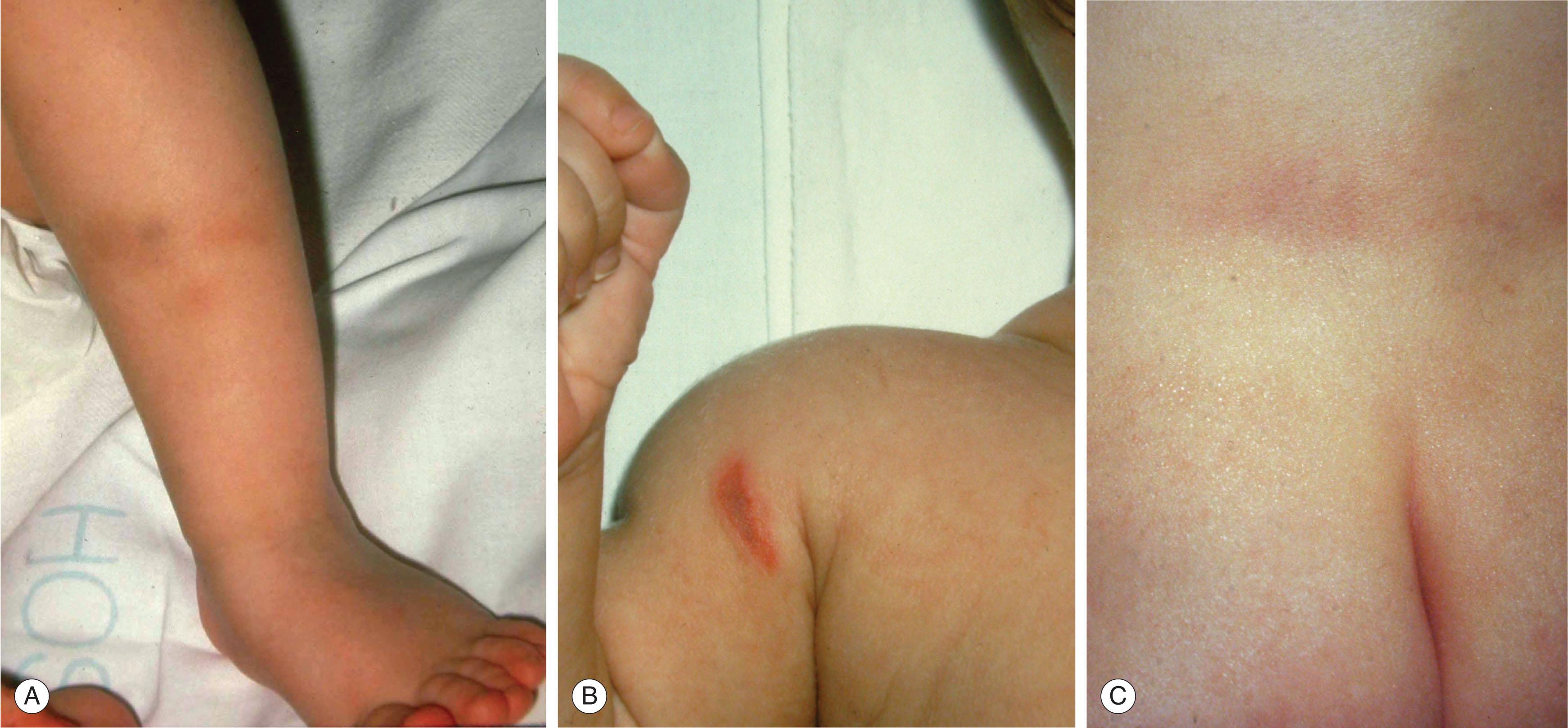
Bites, cigarette burns ( Fig. 71.3 ), and scalds that have a glove and stocking appearance or suggest immersion in hot water.
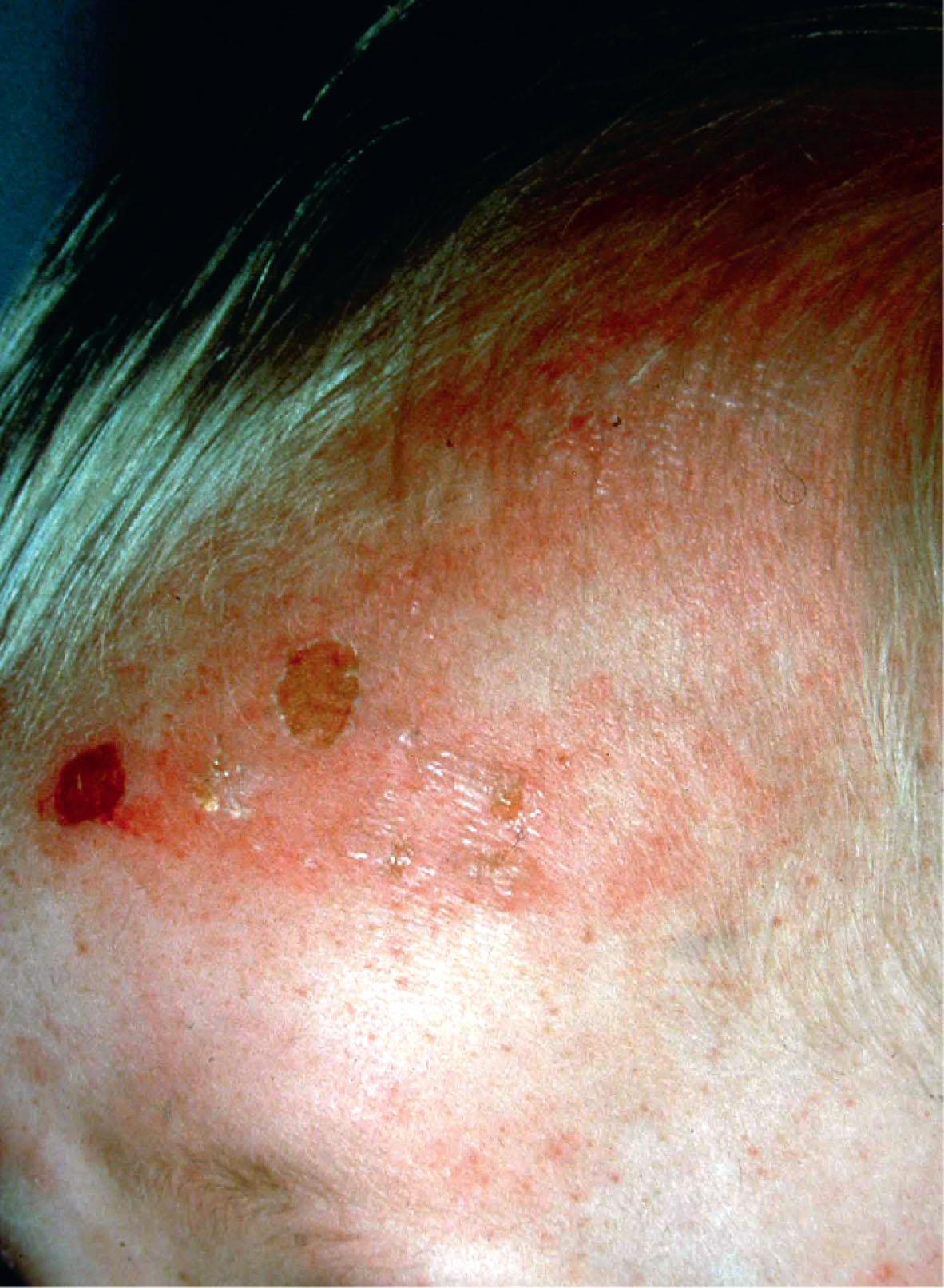
Apparent life-threatening events where the child may be apneic and floppy at presentation.
Unexplained seizures, epistaxis, posterior rib fractures.
Sexually transmitted disease involving the eye presenting after the neonatal period.
History of a near drowning event or ingestion of poisonous substances.
Behavioral signs:
An unkempt child with infestations and tooth decay
Poor engagement with school and medical services
Withdrawn child (frozen watchfulness), aggressive child, sexualized behaviors.
Direct injury to the eye and orbit with a finger or a belt as part of corporal punishment may manifest with periocular swelling and bruising, subconjunctival hemorrhages, burns, lid lacerations, hyphema, subluxation or dislocated lens, cataracts, and globe ruptures ( Fig. 71.4 ). Direct eye injury may cause vertical Descemet’s membrane breaks with corneal haze.
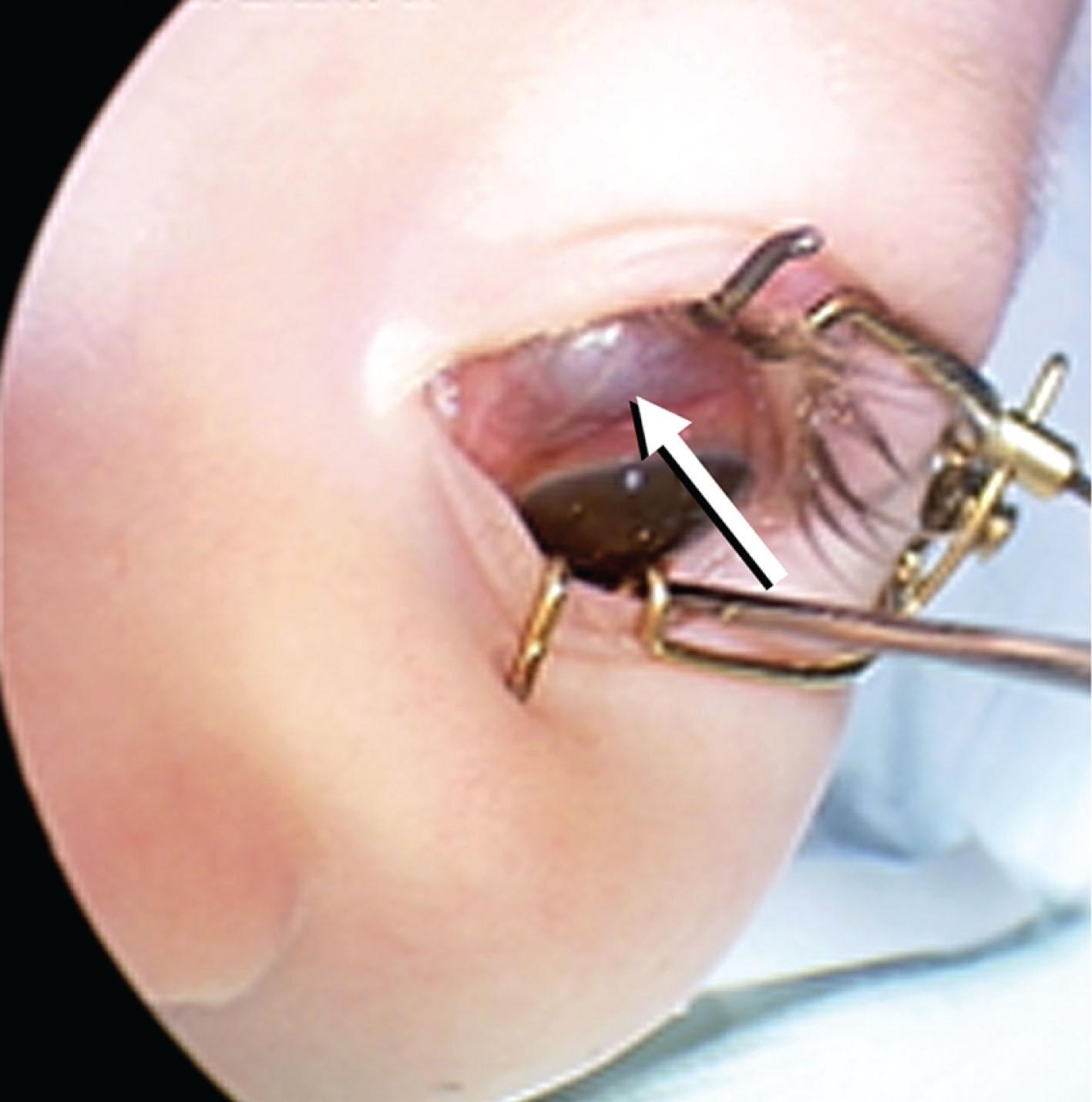
Fabricated or induced injury: may involve the cornea and conjunctiva and lids, usually seen with instillation of caustic substances ( Fig. 71.5 )
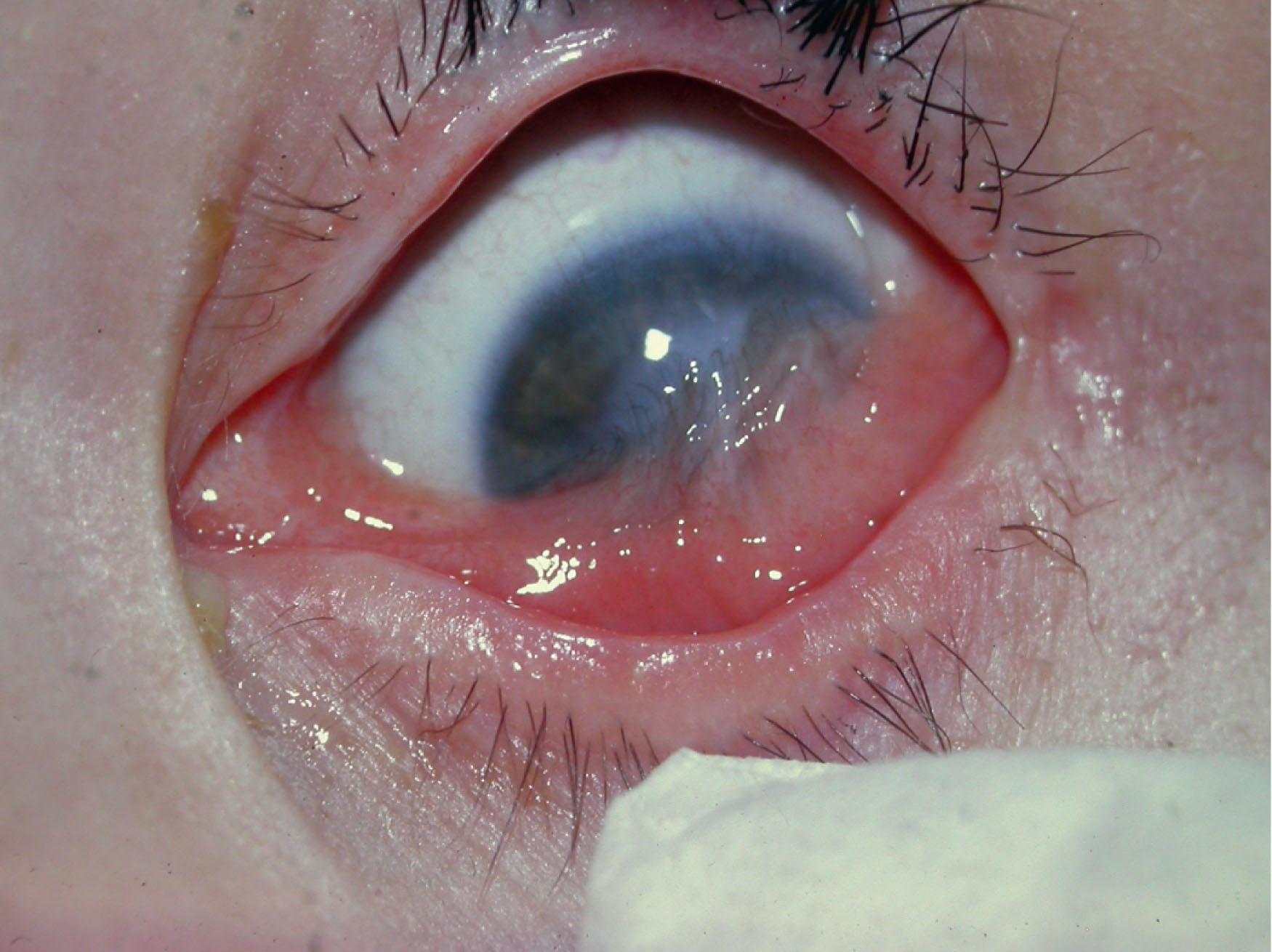
Subconjunctival hemorrhages may be present with and without other intraocular injury. A recent systematic review suggests that a subconjunctival hemorrhage in infants may be a sentinel sign of abusive head trauma. Often these first signs may be missed with the child subsequently presenting with a life-threatening abusive injury.
Orbital and optic nerve sheath hemorrhage: Hemorrhages have been demonstrated in the optic nerve sheath, the orbital fat, the extraocular muscles and motor nerve sheaths ( Fig. 71.6 ). These findings have not been reported in non-abusive head trauma.
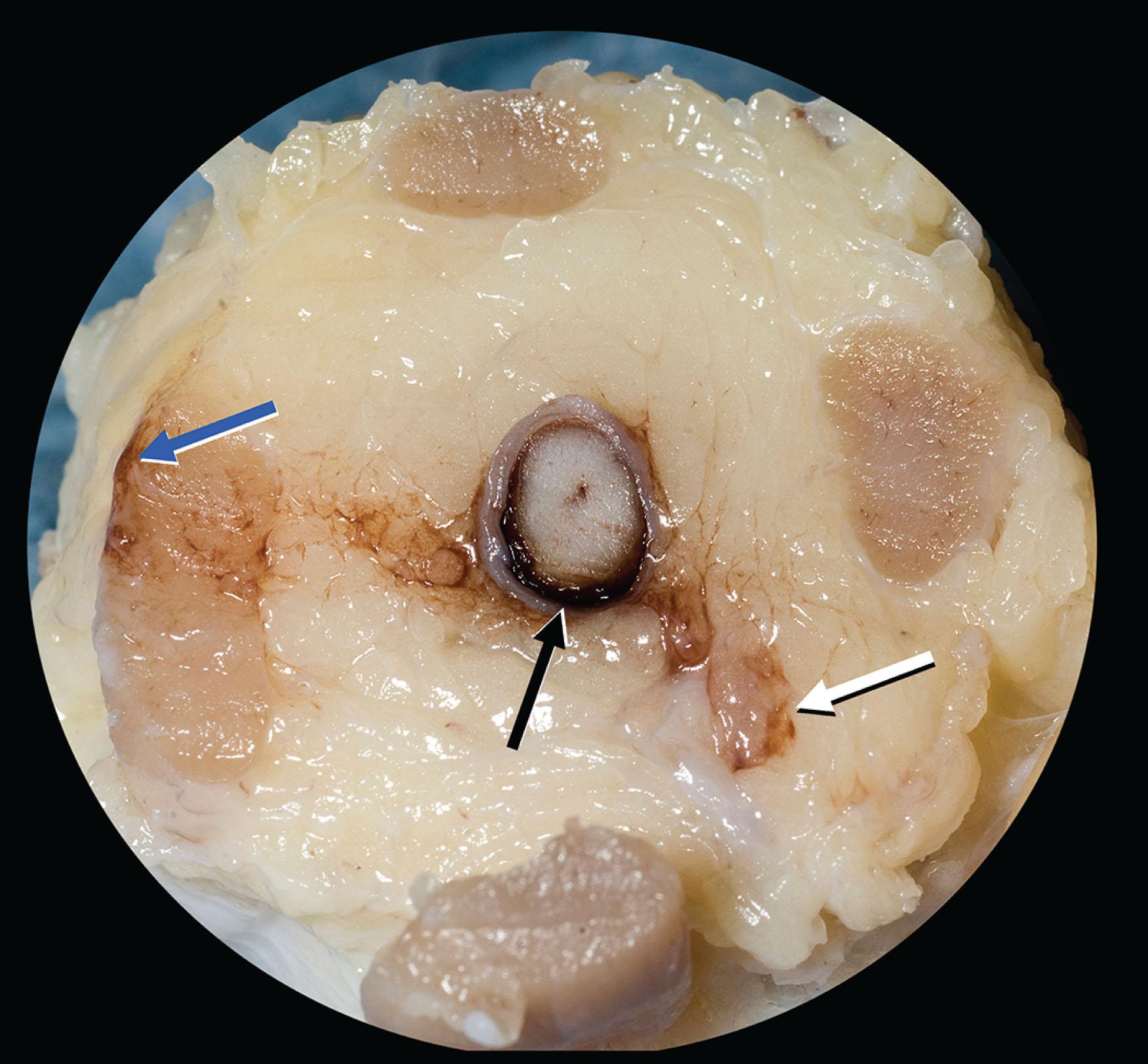
Cranial nerve palsies. The development of acute third, fourth, and sixth cranial nerve palsies as a result of intracranial injury has been reported in abusive head injury.
Become a Clinical Tree membership for Full access and enjoy Unlimited articles
If you are a member. Log in here